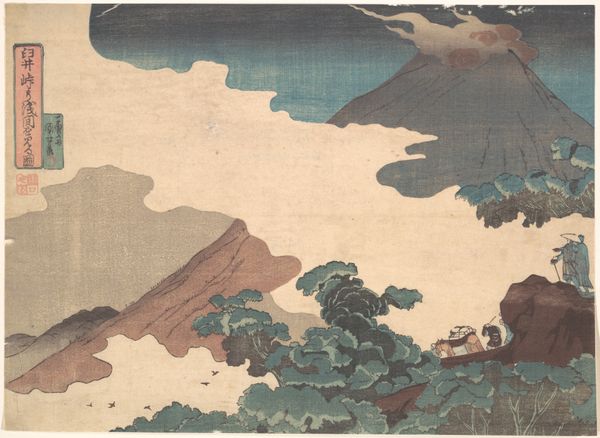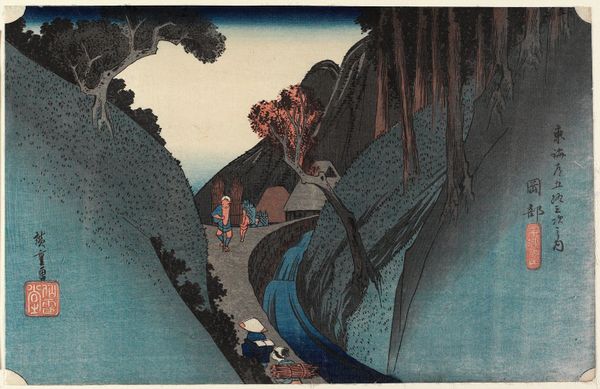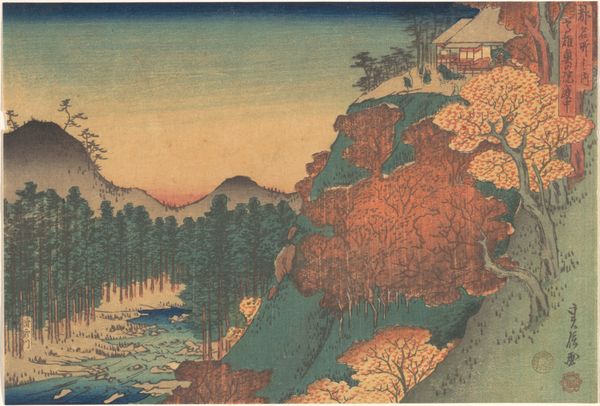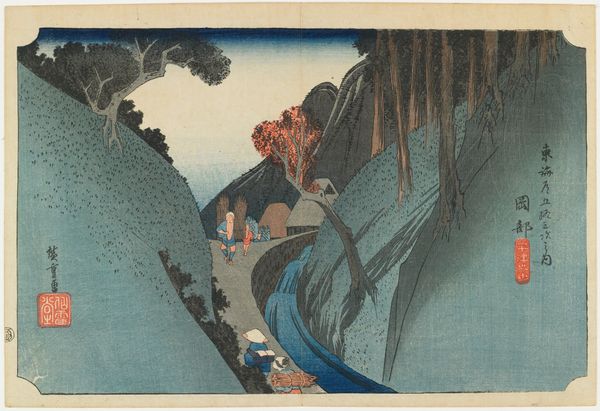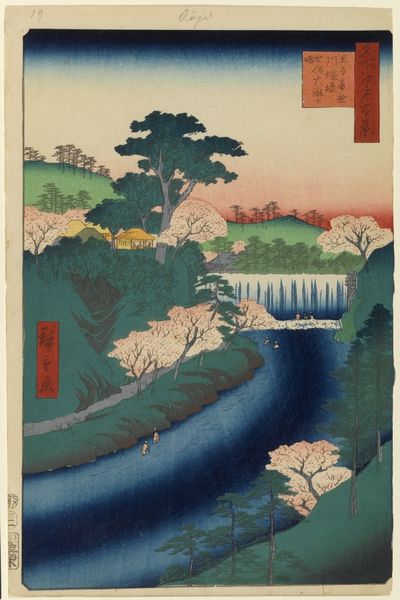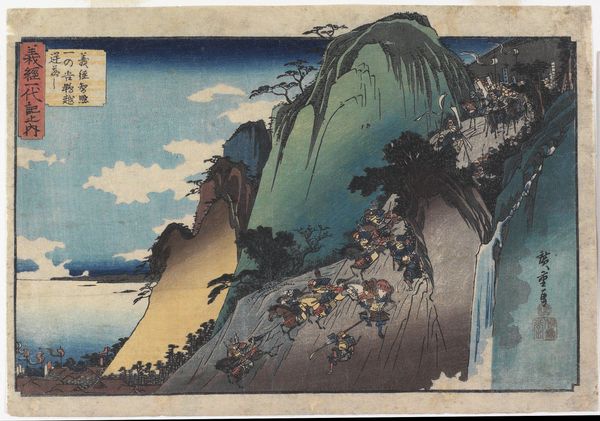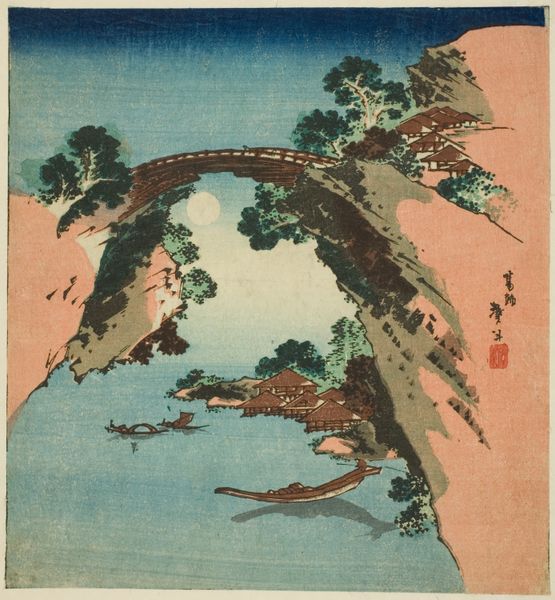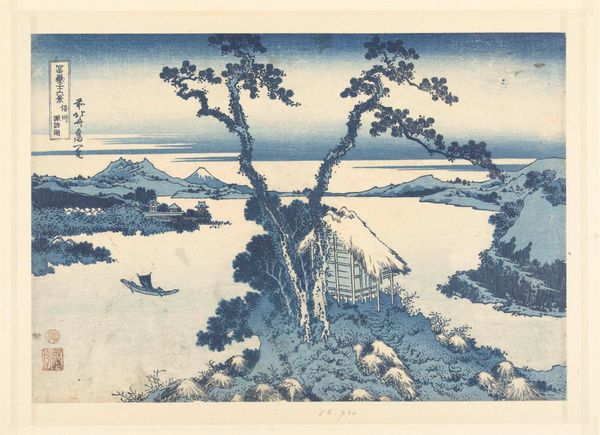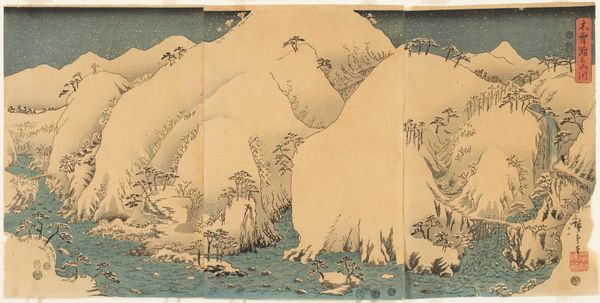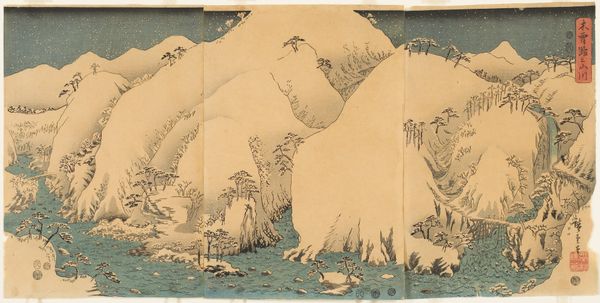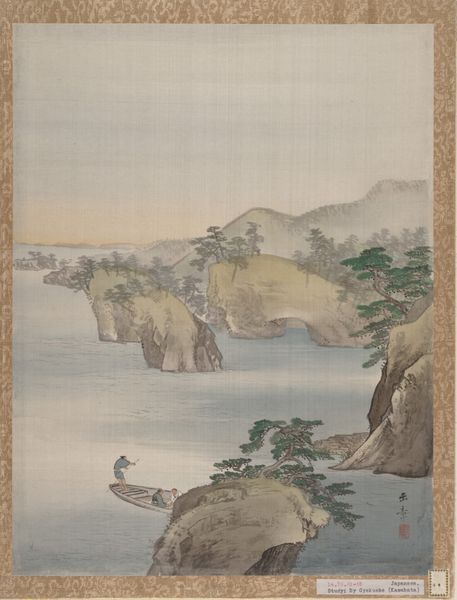
Dimensions: H. 9 3/4 in. (24.8 cm); W. 14 1/2 in. (36.8 cm)
Copyright: Public Domain
Curator: Welcome. We’re standing before Utagawa Kunisada’s “Landscape in the Mist,” a woodblock print created sometime between 1834 and 1866. Editor: It feels remarkably still. The colors are so muted; it's as if the entire scene is holding its breath. It's almost melancholy. Curator: Notice how Kunisada employs the ukiyo-e style to flatten the landscape. The composition is carefully arranged, with a winding river acting as a central motif guiding our eye deeper into the composition. Editor: Ukiyo-e prints often depicted the "floating world," focusing on pleasure and fleeting beauty. What’s fascinating is how Kunisada uses this genre to convey something beyond simple pleasure—perhaps an introspective gaze into our relationship with nature. How do you see the print negotiating the space of pleasure with these more meditative tones? Curator: The key lies in the lines. Observe the artist's skill in creating depth with layered spatial planes. Look at how each section presents a different level of clarity, achieved with sophisticated control over lines, composition, and print layering. Editor: Right. This isn’t just a detached landscape, but also a statement on nature's endurance, if that’s not a sentimental read. One wonders how the people living then responded to scenes that mirrored not just a natural setting, but were increasingly infused with a rising national consciousness. Curator: Such cultural context is essential. If we divorce "Landscape in the Mist" from this history, we overlook the print’s inherent dialogue. To appreciate this fully, we must explore the composition: notice the deliberate balance and form which allows an interpretation to encompass larger narratives beyond just pure scenery. Editor: Absolutely, analyzing this piece solely as an example of refined form feels limiting, when the artist seems so eager to weave these personal-political insights within a deceptively calm space. Considering the period's political unrest and the rising merchant class—how much did such factors impact or influence the viewing and reception of “landscape in the mist?” Curator: Those factors absolutely inform my interpretations; your activist perspective helps contextualize what could be easily perceived only at face value. Thank you. Editor: And thank you for the chance to look more deeply. Hopefully, those insights can give you even greater insight on what Kunisada attempted with this lovely artwork.
Comments
No comments
Be the first to comment and join the conversation on the ultimate creative platform.

